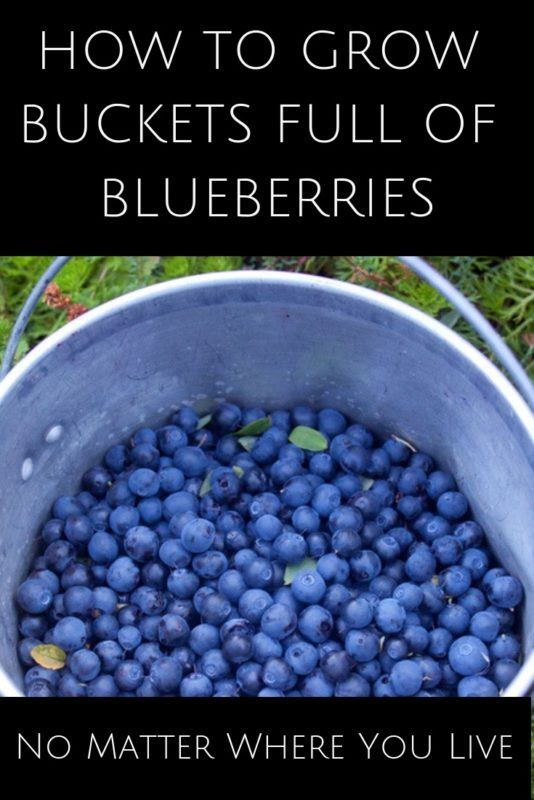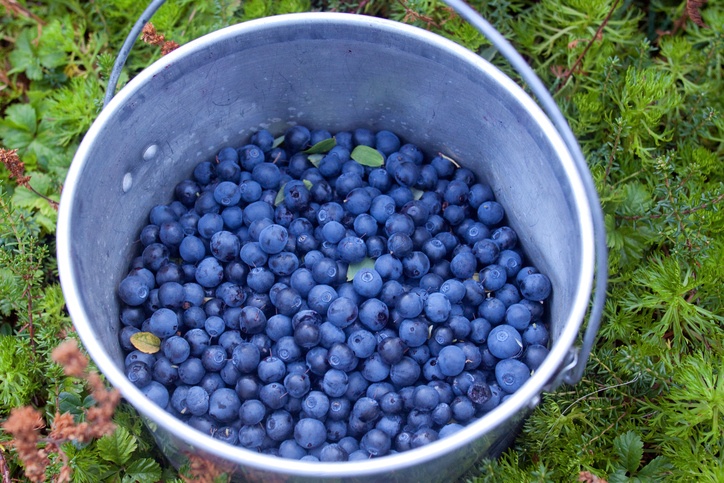
Blueberries are sometimes referred to as nature’s candy, with a juicy, sweet flavor few can resist. But there’s really no reason to try and resist them, as this fruit is among some of the healthiest foods you can eat.
These purple berries offer long-life health benefits that far exceed their tiny size, thanks to being packed with antioxidants that help boost the immune system, and guard against cancer and heart disease.
They’re rich in proanthocyanidin, something that’s been shown to aid in weight loss, fight cancer and help one to enjoy younger looking skin.
Blueberries are also a good source of vitamins A, C, and K, manganese, and potassium.
Why wouldn’t you want to grow buckets full of blueberries with all that nutrition and flavorful taste too?
Eat them right off the bush, add them to plain yogurt or use them in smoothies and baking.
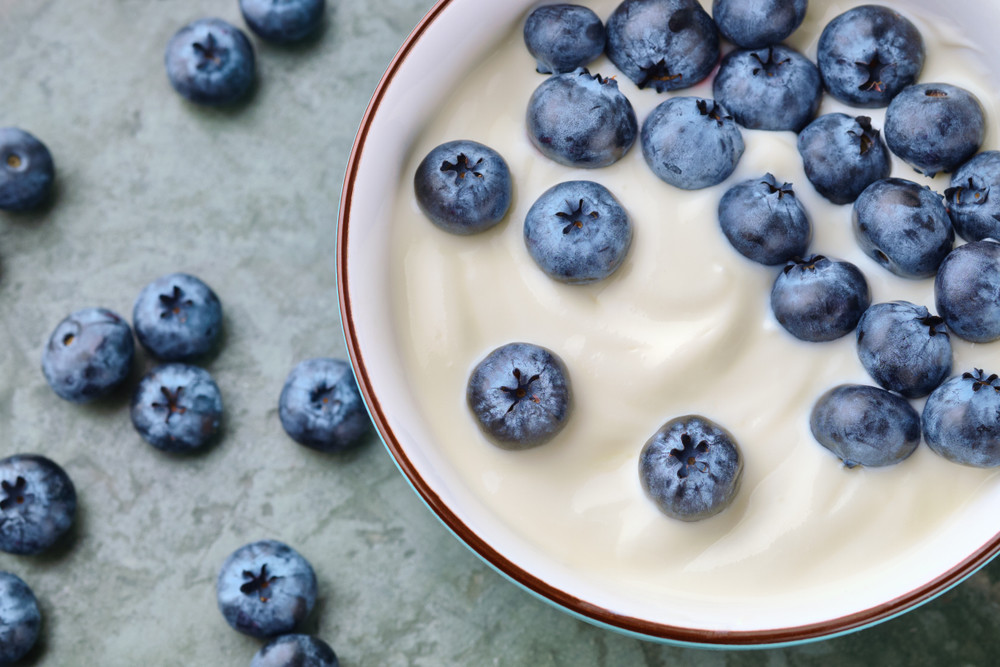
Of course, you probably just want to know how you can grow your own, right?
The good news is that blueberries are long-lived, dependable, and some of the easiest fruit to grow organically.
Certain species are native to particular regions of North America, but some type of blueberry bush can be grown just about anywhere, provided you have acidic soil with a pH below 5.0.
They can also be grown in containers filled with a bark-based, acidic planting mix.
Here’s what else you need to know in order to reap those buckets of berries.
Decide where and how to plant
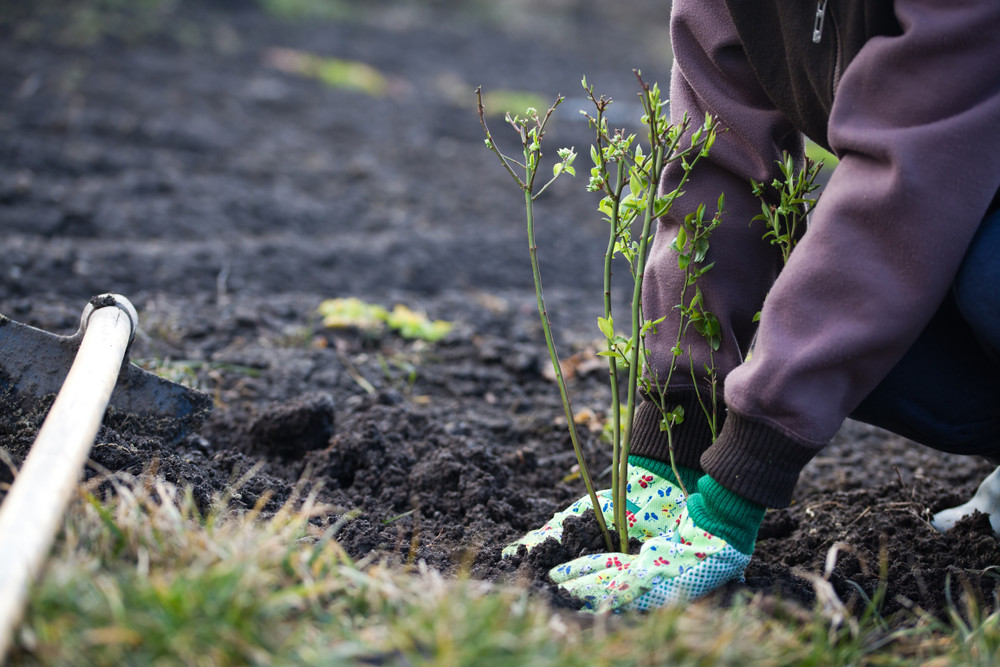
Your first consideration is determining where and how you’ll plant your blueberries.
If you’re limited on space, you may use a bucket or another type of container that can be placed on a patio or deck. Otherwise, you’ll need to stake out an area of your yard or garden and ensure that the soil has the right acidity.
Remember, the pH should be below 5.0. If it’s just slightly too acidic, between 5.5 and 6.0, you can further acidify by top-dressing with sulfur just twice a year.
If it’s too high alkaline, above 6.0, as it often is in much of the West, you can either consider container growing and simply purchase a bark-based, acidic planting mix, or you can create your own miniature acid-loving zone with just a little effort.
To do so, follow these steps:
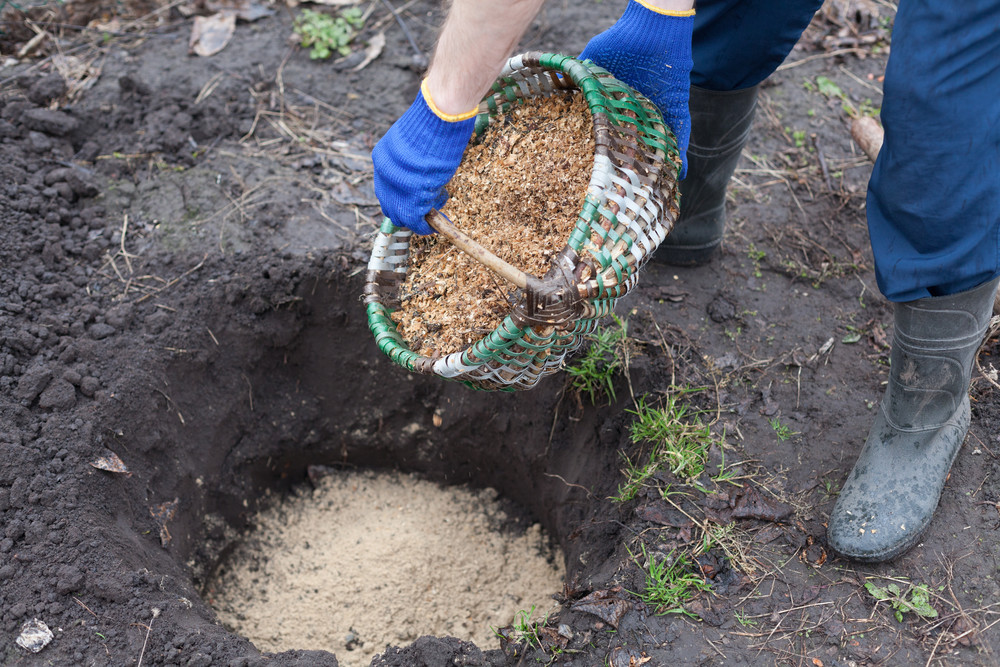
- For each bush you want to plant, excavate a hole two feet deep and six feet around and fill it with a mix of equal proportions of peat moss and sand.
- Keep the bed mulched with aged sawdust, which is acidic, or another type of organic material, and fertilize annually with a balanced organic fertilizer.
- If you irrigate and your water is also alkaline, meaning you have hard water, acidify it first with two teaspoons of vinegar per gallon.
You’ll want to choose a well-drained, sunny spot – though they’ll grow in semi-shade, you’ll get more fruit with more sunshine.
Especially when first developing, blueberry plants require a high amount of organic matter in the shallowest layers of the soil. You can amend your soil with 4 inches of acidic organic matter like leaf compost or rotted sawdust.
When to get started
Most gardeners and would-be gardeners start thinking about planting in late winter or early spring – and that happens to be the best time to get started in planting your blueberries, during the six weeks before the last spring frost.
They need time to grow roots before the hot weather arrives.
Choose your plants
You’ll want to choose the right type of blueberry plants for your particular region.
For example, if you live in a northern climate, lowbush blueberries are native to the colder areas of North America and tend to do well there.
Their compact bushes can be grown as a ground cover or as an edible hedge. They do well even in partial shade.
If you’re very far north, choose Saskatoons, a very hardy variety that can survive in temperatures as low as minus 60 degrees Fahrenheit. These plants are different in that they actually prefer more neutral soil with a pH that’s between 6.0 and 7.0.
You can find a blueberry plant for your area in a local garden center.
In recent years, with advancements in shipping techniques for live plants, Amazon have started offering high quality, well reviewed live plants.
You can browse their selection of best-selling blueberry bushes here and can read the reviews to find the correct plant for your region.
Below we present some of the most popular.
Spacing considerations
The type of blueberry plants you get will also help determine spacing requirements, which can range anywhere from 12 inches between plants to as much as 12 feet.
Lowbush blueberry plants need just 12 inches of space in between each, while you should allow 4 feet between highbush plants.
Planting
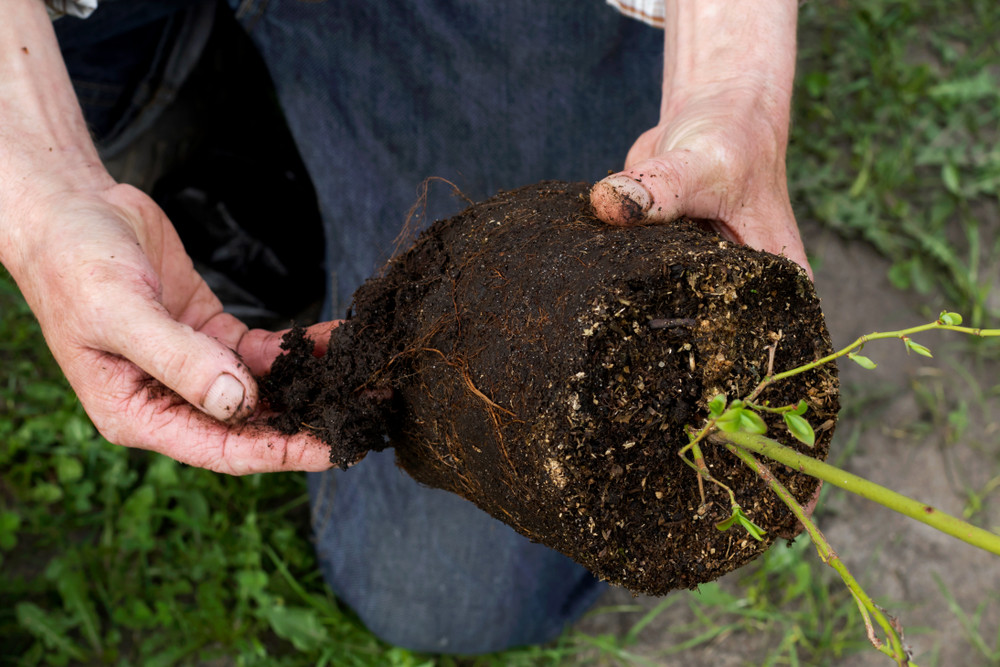
Just before planting, enrich the soil in each hole by mixing in a bucketful of pine needles, peat moss or composted leaves, which helps maintain acidity and provides a long-lasting source of humus for optimal nutrition, aeration, and moisture.
Set each plant in slightly deeper than it stood in its original pot.
Just after planting, spread a three-inch layer of organic mulch over the ground. This will serve to thwart weeds as well as to keep the roots cool and moist.
One of the best types of organic mulch is well-aged sawdust, though you’ll want to be sure it’s not from wood that was treated with a chemical preservative.
Other good options include pine needles, wood chips, straw and crushed or shredded leaves.
Once the plants are happily settled in their new home, it’s time to give them a good watering. They’ll need one to two inches of water every week.
Your soil should stay moist, but not oversaturated. If it feels like it’s drying out near the surface, give the plants a slow, deep watering by holding a hose to their bases and then counting to 20.
If you’re growing them in a container, give them water until it starts to run out of the bottom of the pot.
Give your blueberry plants watering priority during droughts. They have extensive surface roots, so watch the wetting pattern of your watering equipment to ensure they get a thorough soaking, to 6 inches deep.
Pollination
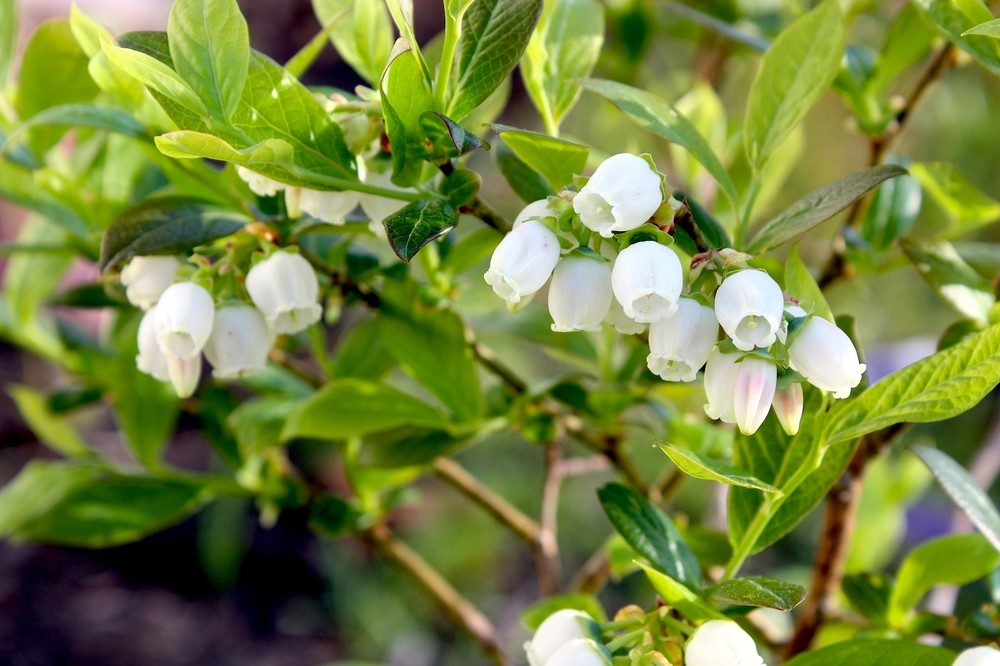
Although some varieties of blueberry plants are self-fertile, they really need a second or even a third plant to pollinate with if you hope to have a larger blueberry crop.
They often do particularly well by having various varieties to cross pollinate with. In fact, grouping them together will ensure they cross pollinate each other and provide buckets and buckets of blueberries for many years to come.
Pruning and growing
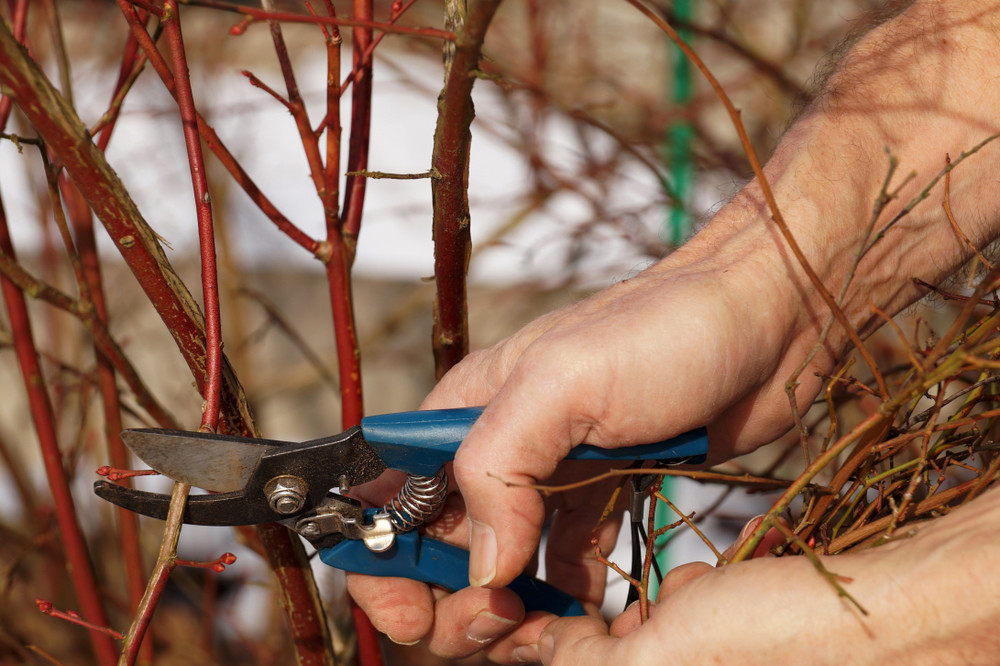
By picking off flowers that form on your blueberry bushes during their first year, it will allow the plants to expend all of their energy on getting a strong start.
Not only is important important to keep them watered during dry spells, but you should renew your mulch as often as necessary in order to maintain a 2-inch-deep layer.
Once the plants are established, you can simply fertilize them each spring, using a light application of an organic fertilizer.
Your bushes won’t need any pruning at all during the first three years.
During the first two years, remove the fruit buds to allow the bush to establish itself.
After that, pruning in late winter annually will help to get rid of old wood and stimulate it so that young, fruitful branches can grow.
It also helps to remove unproductive or crowded stems. When you remove some of the fruit buds, the ones that remain tend to grow larger and sweeter berries too.
Employing proper pruning techniques after your plants have reached their fourth birthday, is a must to keep production at its highest, plants at a more manageable height, and the berry size as large as it can be.
Stems that are six years or older won’t produce optimally. In late winter, the oldest stems should be cut out to the base.
Perform regular soil tests
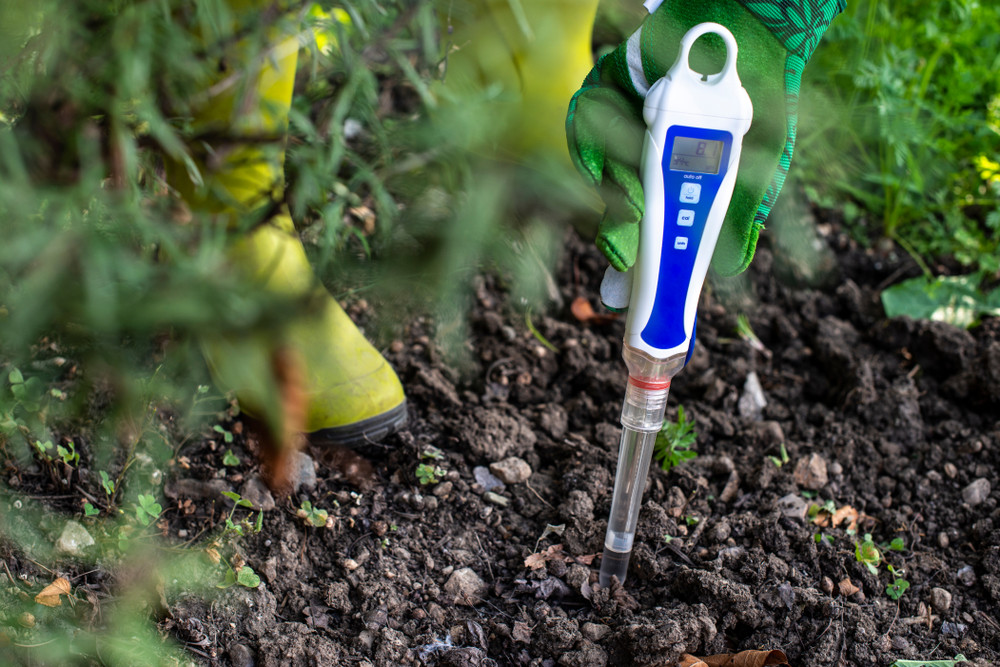
As blueberry plants are especially picky about their soil, do a soil test every two or three years, and add sulfur if you need to lower the pH.
You can get a nifty little tool to quickly and easily test the pH of your soil.
Keeping the birds away
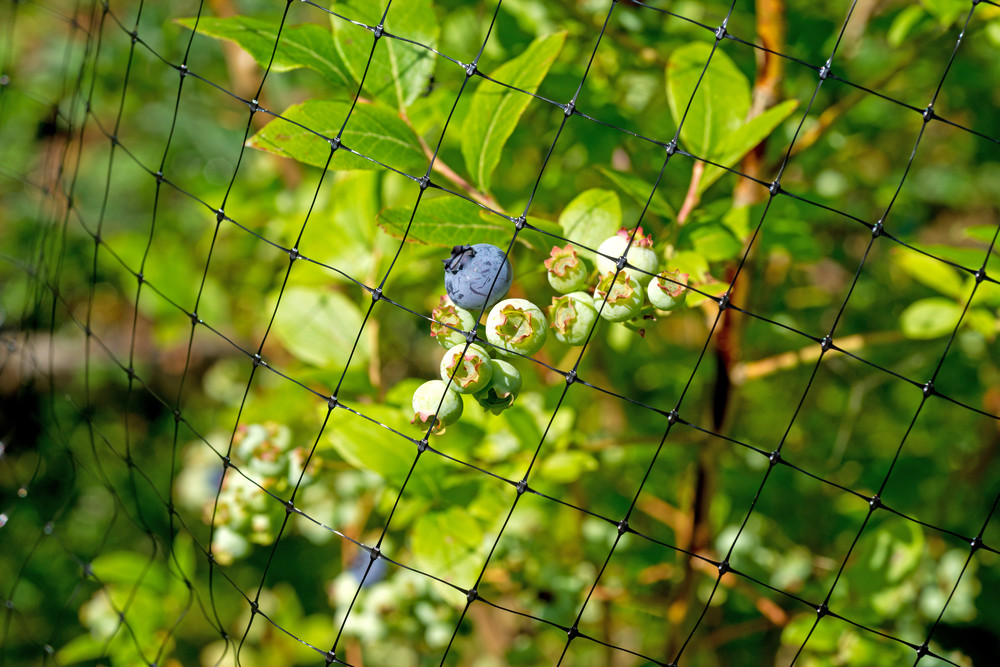
Just like humans, birds love blueberries – and sometimes, they can swoop in and eat them all before you’ve even noticed them growing.
The only sure way to deter them is to seal your bushes with bird-proof netting just as the berries start to ripen.
Netting the plants during the fruiting season will outsmart the birds, but if you choose to drape netting over the bushes, be sure to be extra careful to gather it tightly around the base of each one so that the winged blueberry stealers can’t make their way inside.
Some gardeners find that placing an owl decoy around blueberry bushes can also protect them, though that seems a bit risky.
Harvesting
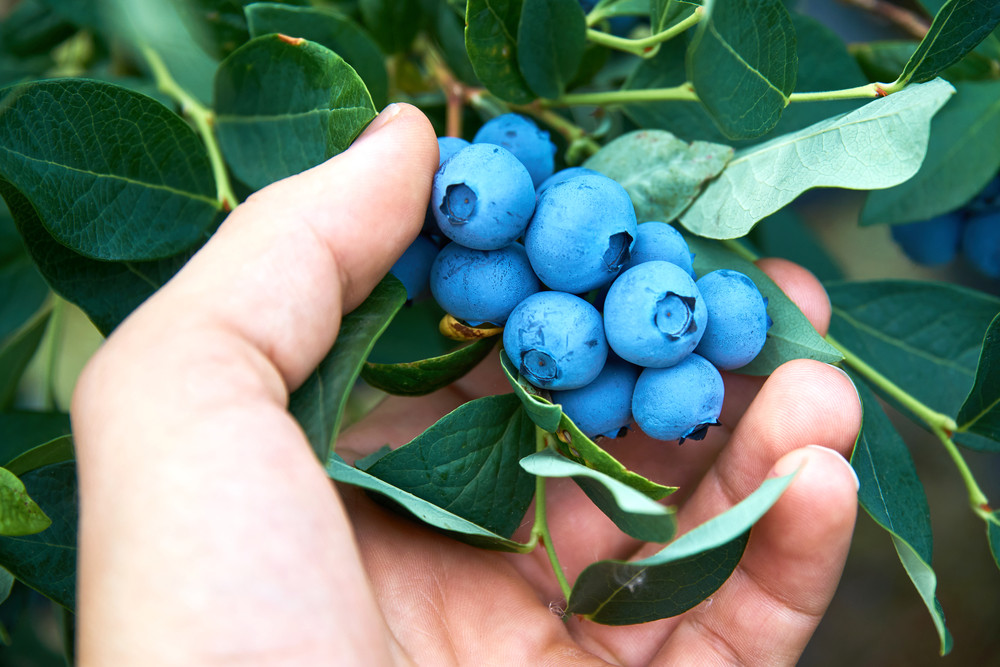
Now the best part, harvesting!
Blueberry harvesting season can be anywhere from late May through mid-August, depending upon the variety and your local climate.
The fruit doesn’t reach its full flavor and aroma until several days after it’s turned completely blue all the way around.
White and green berries won’t ripen further once they’re picked. The longer they stay on the bush to ripen fully, the sweeter the berries become.
If you want the sweetest blueberries you can possibly get, meaning berries that will absolutely blow store-bought ones away, tickle the bunches of berries.
Only the dead, ripe ones will fall off into your hand. Pick them at least twice a week while they’re ripe.
Once picked, you can put them in a bucket, basket or another type of container, and continue to harvest.
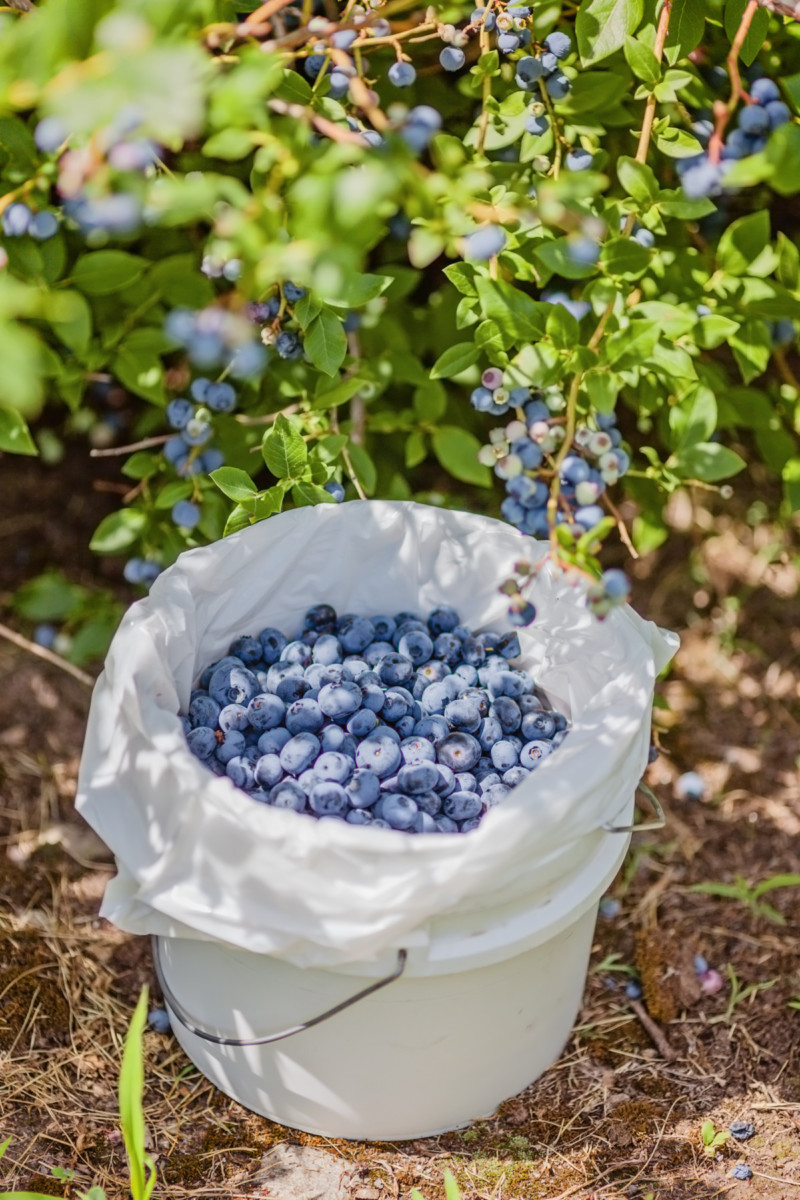
Of course, you might not be able to resist a little test tasting just to be sure it’s really ripe – and, you really shouldn’t. Taste away through the picking process.
There’s really no big secret when it comes to harvesting blueberries.
Beyond the actually picking, there probably isn’t an easier fruit to prepare and serve.
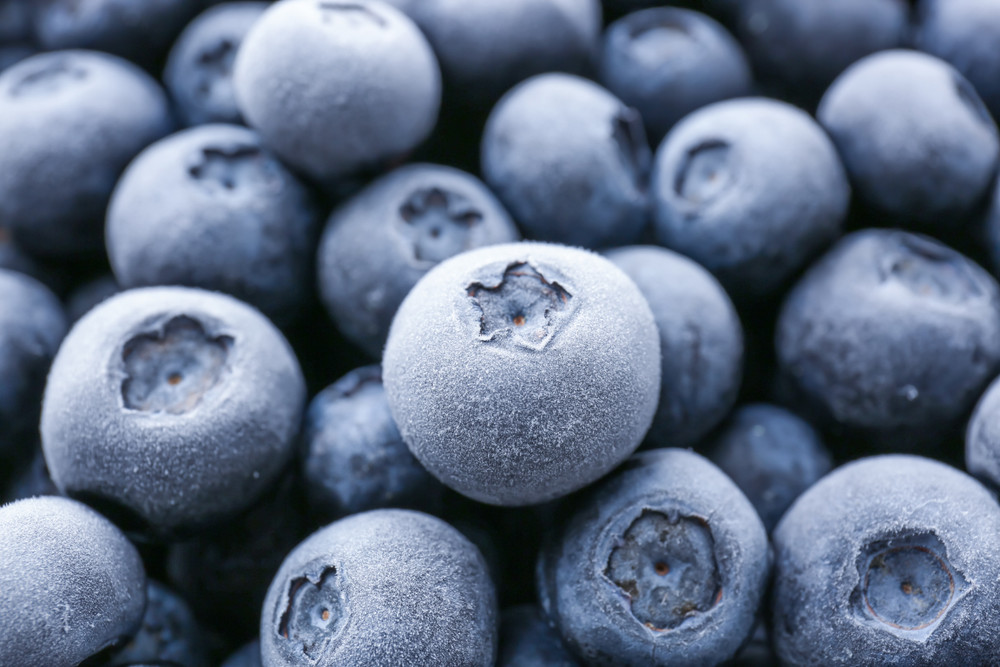
There’s no need to core, peel, pit or cut it – and, you can freeze them, can them or dry them to store for the long term if you can’t use them all right away for pies, cobblers, snacks, and toppings.
If you freeze some, you can take them straight out of the freezer and toss them right into a smoothie – however if you decide to use your blueberries, you can be assured their taste and incredible health properties are well-worth the effort it took to grow them.
Preventing diseases, pests, and other issues
Generally, blueberry plants have few serious disease or pest problems.
The biggest issue they face is the birds, which can harvest a lot more than their share, but the netting, as mentioned, is effective for deterring them.
With only a few bushes, you can easily use bird netting as the berries start to ripen. Some gardeners actually encase their entire blueberry growing area in a netted cage.
If you have a large blueberry garden, you might want to consider using a bird deterrent that sends out a bird in distress call, which effectively keeps the bird’s away.
There are a few diseases and insects to watch out for.
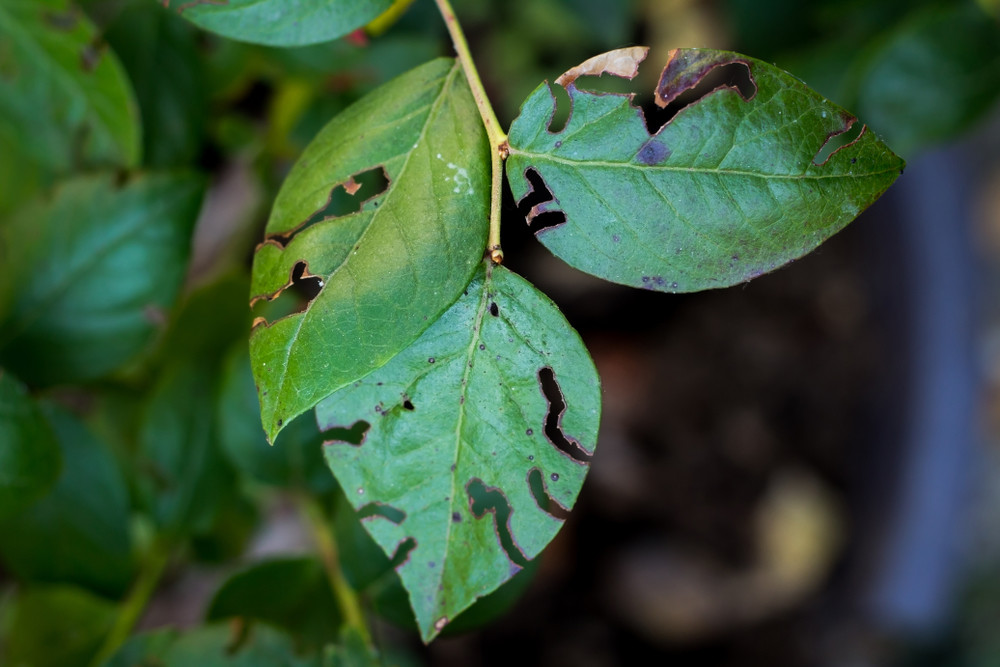
A number of fungal diseases can affect blueberries, such as leaf spot and powdery mildew diseases.
Your best bet for prevention is to plant resistant varieties. It’s also a good idea to be sure your plants have lots of space for proper air circulation and get plenty of full sun.
Clean up any fallen debris and replace mulch every year so that spores can’t overwinter in the area.
Insects to watch for include cranberry fruit worm, plum curculio, cherry fruit worm, and blueberry tip bore.
If they’re commonly found in your area, you may want to check with your local nursery to find out what the advised deterrents and treatments are.
Avoid chemicals to avoid harming your health, the health of your family, pets and the environment – look for a more natural alternative whenever possible.
Also be on the lookout for chlorosis, AKA yellowing leaves. It’s not uncommon for blueberry leaves to start to yellow, which is often a sign of an iron deficiency, though it’s typically not caused by a lack of iron in the soil.
Most likely, your plants are telling you that the soil pH is too high, which means they can’t access the iron that’s there.
If you see the yellowing start to progress, it’s time to check your soil and make any necessary adjustments.
Pin This For Later
